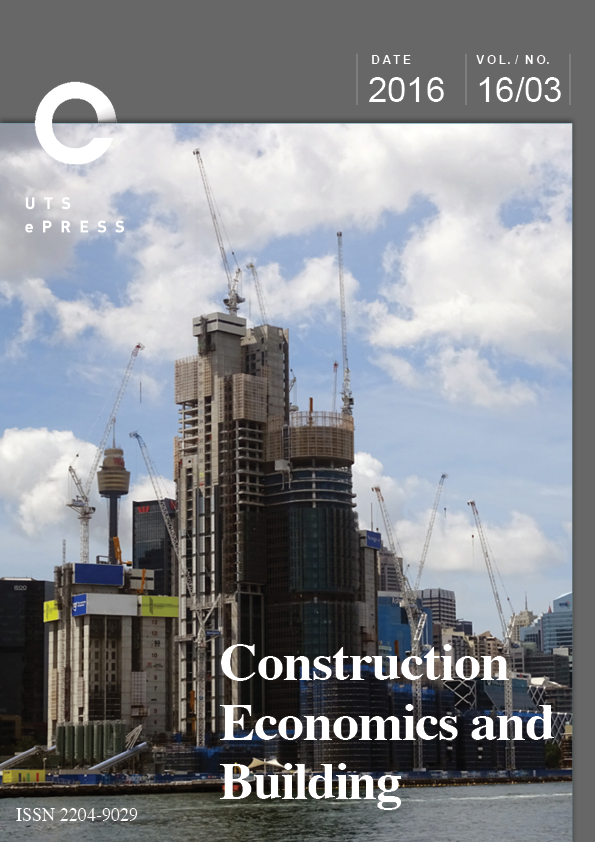Assessing construction innovation: theoretical and practical perspectives
Main Article Content
Abstract
Innovation is key for productivity improvement and advancements in different sectors of the economy, including the construction sector. The criticism of the slow pace of innovation in construction industry may be unwarranted, considering the structure of the industry and nature of the construction business. The loosely coupled nature of firms, mostly Small and Medium Enterprises (SME’s), delivering ‘projects’ through partial engagement, together with the distinction between the project innovation and firm innovation makes it difficult to extract innovations in a meaningful way. The problem also lies in conceptualising, defining, articulating and assessing innovation in construction. The literature is replete with research into construction innovation, however, there is limited research into understanding how innovation is perceived and narrated in practice. The paper aims to explore how innovation is assessed and narrated in construction, specifically analysing theory and practice perspectives. A theoretical model was constructed from a structured literature review illustrating existing discourse and narratives of construction innovation assessment. A qualitative analysis of ‘Professional Excellence in Building’ submission documents to the Australian Institute of Building was performed to identify the practice perspective of innovation. The findings suggest that internal organizational and process innovation account for the majority of improvements identified. Importantly a taxonomy of narrative is developed that articulates how the construction industry in Australia views industry innovation.
Article Details
Section
Authors who publish with this journal agree to the following terms:
a) Authors retain copyright and grant the journal right of first publication with the work simultaneously licensed under a Creative Commons Attribution License that allows others to share and adapt the work with an acknowledgement of the work's authorship and initial publication in this journal.
b) Authors are able to enter into separate, additional contractual arrangements for the non-exclusive distribution of the journal's published version of the work (e.g., post it to an institutional repository or publish it in a book), with an acknowledgement of its initial publication in this journal.
c) Authors are permitted and encouraged to post their work online (e.g., in institutional repositories or on their website) prior to and during the submission process, as it can lead to productive exchanges, as well as earlier and greater citation of published work (See The Open Access Citation Advantage Service). Where authors include such a work in an institutional repository or on their website (ie. a copy of a work which has been published in a UTS ePRESS journal, or a pre-print or post-print version of that work), we request that they include a statement that acknowledges the UTS ePRESS publication including the name of the journal, the volume number and a web-link to the journal item.
d) Authors should be aware that the Creative Commons Attribution (CC-BY) License permits readers to share (copy and redistribute the work in any medium or format) and adapt (remix, transform, and build upon the work) for any purpose, even commercially, provided they also give appropriate credit to the work, provide a link to the license, and indicate if changes were made. They may do these things in any reasonable manner, but not in any way that suggests you or your publisher endorses their use.
